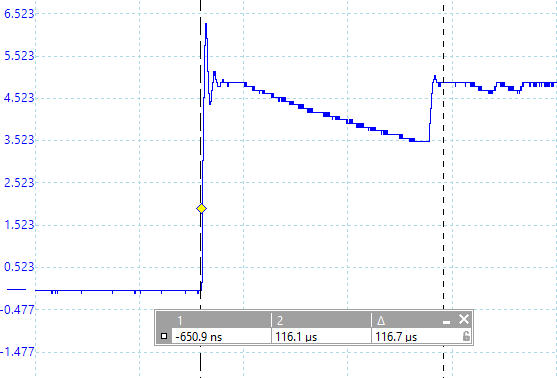I am trying to debounce a button.
Here is my result so far after placing a 1uF ceramic capacitor in parallel with the button:


This should work as an input to my Arduino 5V since it has High: U >= Vht = 3.0 V and Low: U <= Vlt = 1.5 V.
I guess this means my Arduino has a Schmitt trigger on its input pins?
I want to send my trigger signal to another digital input (a framegrabber that starts recording images on rising edge and stops on falling edge) and I do not know if it has a Schmitt trigger on its input.
I am therefore looking for a Schmitt trigger IC that can clean up and make my signal TTL 5V digital.
Could you recommend such an IC that is DIP (not surface mounted) and can be bought in small quantities?
I think I understand how I could debounce using the Arduino by measuring time from rising edge and making sure that a falling edge is not delivered too soon after that.
However I would prefer to do this in hardware for the learning experience. Unless that is software debouncing is somehow better than hardware debouncing.
